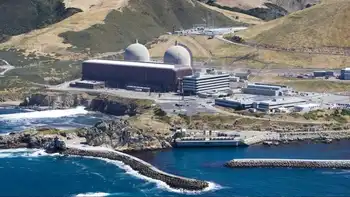Group aims to 'green up' power grid
Randomly tossing green power into that network without planning can be a lot like throwing a monsoon season flood into an area with no drainage ditches — you just don't know exactly what will happen, or where the flows will end up.
But a group of local businesses, partnering with experts from Los Alamos and Sandia national laboratories, aims to find out exactly what the addition of new alternative energy sources will do to Santa Fe's power grid, in hopes of fostering a network that is as green, safe and efficient as possible.
The group is being organized by the WildEarth Guardians, which has dubbed this the Renew Santa Fe Project. It plans to hold its first meeting at the Santa Fe Complex, although the event isn't open to the public.
In preparation for the first meeting, scientists at both labs have been using a computer program that is often used to model disaster situations in big cities — and re-gearing it to model the inner workings of the power grid in Santa Fe.
That effort is being led by Loren Toole, a LANL scientist and Santa Fe resident who has long been interested in alternative energy, he said.
"The purpose of this is to develop a renewable energy business plan for all of Santa Fe," Toole said. "We have an energy model of the city, and we're going to make it so you can plug alternative energy sources into that model and see how they integrate."
Solar farms, for example, might work better in some parts of the city than others. Bottleneck areas in the power grid could affect how viable something like that would be, because if excess power from a farm can't be transferred to other parts of town through a slow part of the network, then the farm might not be successful, Toole said.
Work by the scientists is being funded through the New Mexico Small Business Assistance Program, which loans laboratory scientists and the use of some technologies to small companies and communities around the state.
Toole and Howard Passell, a Sandia scientist, are each leading groups at their respective labs that are trying to tweak the model and improve it, so the Renew Santa Fe Project can test the effects of several types of renewable sources — such as wind power, biomass, hydrogen and solar.
And with the input of local businesses and groups, that model will be much more accurate, Passell said.
"We'll be able to experiment with different mixes of energy consumption as we look at generation and grid problems," Passell said. "As a group we'll be able to figure out how to achieve this."
The model also will be able to do some cost-benefit analysis for various energy sources, showing how green power compares with more traditional sources like natural gas, Toole said.
"In order to make this work we have to look at substitution fuels in Santa Fe," Toole said. "For instance, natural gas is a heating fuel, and if we use solar to generate electricity, how will that compete or compare with natural gas?"
Businesses participating in the meeting will include alternative power companies, home builders and other interested stakeholders, said Rebecca Sobel, conservation organizer and outreach director for WildEarth Guardians in Santa Fe.
"Of course, we're still trying to figure out who all should participate," Sobel said. "We're hoping to bring everybody that's working on this together in one room."
Eventually, WildEarth Guardians would like to spread knowledge gained from the project to other communities statewide.
The environmental group has a goal of turning New Mexico into a 100 percent renewable energy state, although not everybody on the project agrees with that goal, Sobel admitted.
Once the stakeholders in Santa Fe have a more solid idea about how the project will work, and when the model is a little more developed, the group plans to approach Public Service Company of New Mexico with what it's learned, Sobel said.
"PNM is obviously a big player," Sobel said. "We just want to make sure all the little guys have a voice before we approach them."
The group plans to have a preliminary report sometime late this year, but the project will likely span at least two years and possibly longer, she said.
Involvement by the labs has been critical in the effort, she added, because it will give the project a much higher chance of success.
"Working with the labs — they're credible, expert science and government organizations," Sobel said. "We can establish a foundation through them that we hope to extend to the entire state."
Related News

Should California classify nuclear power as renewable?
SAN FRANCISCO - Although he admits it's a long shot, a member of the California Legislature from the district that includes the Diablo Canyon nuclear plant has introduced a bill that would add nuclear power to the state's list of renewable energy sources.
"I think that nuclear power is an important component of generating large-scale electricity that's good for the environment," said Jordan Cunningham, R-San Luis Obispo. "Without nuclear as part of the renewable portfolio, we're going to have tremendous difficulty meeting the state's climate goals without a significant cost increase on electricity ratepayers."
Established in 2002, California's Renewables Portfolio Standard spells…




